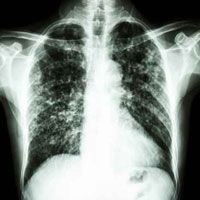Article
New Guidelines to Prevent Atrial Fibrillation
Author(s):
The American Association for Thoracic Surgery (AATS) has released new guidelines designed to prevent the occurrence of atrial fibrillation (AF) in thousands of patients who undergo lung surgery in the United States each year.

The American Association for Thoracic Surgery (AATS) has released new guidelines designed to prevent the occurrence of atrial fibrillation (AF) in thousands of patients who undergo lung surgery in the United States each year.
A taskforce of 16 experts — which included cardiologists, electrophysiology specialists, anesthesiologists, intensive care specialists, a clinical pharmacist and both thoracic and cardiac surgeons — weighed evidence from dozens of studies before producing its recommendations for the prevention and treatment of perioperative and postoperative AF.
The Journal of Thoracic and Cardiovascular Surgery
The document, which was published in , advises doctors to employ a number of prevention strategies that are supported by research but “underused” in clinical practice.
Patients taking beta-blockers before thoracic surgery should continue them (though perhaps at reduced doses) after their operations to avoid beta-blockade withdrawal. Doctors should consider intravenous magnesium supplementation to prevent postoperative AF when serum magnesium level is low or if they suspect that total body magnesium is depleted. Preventive administration of medications such as diltiazem or amiodarone may be reasonable for some patients who face increased risk of AF but it is not recommended for all such patients.
The guidelines also recommend against several experimental prevention strategies that appear ineffective or counterproductive:
- Digoxin should not be used for prophylaxis against AF.
- Catheter or surgical pulmonary vein isolation at the time of surgery is not recommended for patients who have no previous history of AF.
- Complete or partial pulmonary vein isolation at the time of lung surgery, even bilateral lung surgery, should not be considered for prevention of AF, as it is unlikely to be effective.
In addition to stating best practices for preventing new cases of AF, the guidelines also specify how caregivers should monitor different patients for signs of problems.
The document advises doctors to order 48 to 72 hours of continuous postoperative ECG telemetry as a matter of course for all patients with any history of AF or any elevated stroke risk as well as all patients who undergo procedures that pose an intermediate or high risk of producing the condition.
Even for low-risk patients who undergo low-risk procedures, the guidelines recommend that caregivers check frequently for clinical signs of AF and — should any such sign appear — begin immediate ECG telemetry to make a certain diagnosis and measure the duration of the patient’s heartbeat remains irregular.
What’s more, the taskforce recommends, both electrophysiologically-documented AF and clinically diagnosed AF should be included in the clinical notes and reported in clinical trials or studies.
In cases where patients do develop AF, the guidelines provide advice on treating the condition with various types of medications, both in the short term and, for patients who develop a persistent form of the condition, over the long term as well.
“These guidelines are best used as a guide for practice and teaching. The applicability of these recommendations to the individual patient should be evaluated on a case-by-case basis, and only applied when clinically appropriate,” said the taskforce’s co-chair, Gyorgy Frendl, MD, PhD, of the Department of Anesthesiology, Perioperative Critical Care and Pain Medicine, Brigham and Women's Hospital and Harvard Medical School.
“In addition, these guidelines can serve as a tool for uniform practices, to guide preoperative evaluations, and form the basis of large, multicenter cohort studies for the thoracic surgical community.”





